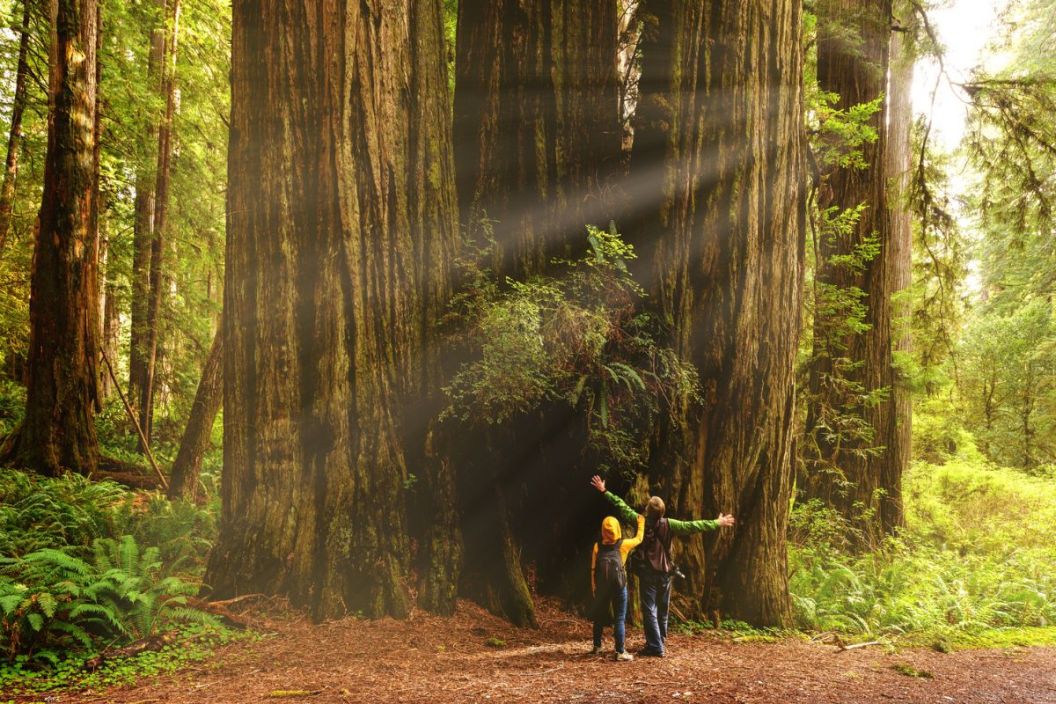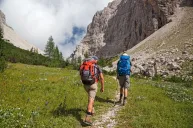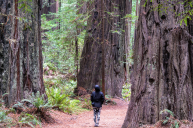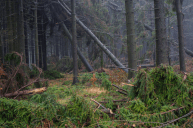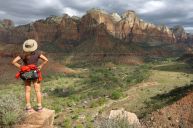Hyperion, the world's tallest tree, is off-limits for the foreseeable future. The Park Service has issued a ban on getting too close after visitors damaged the surrounding undergrowth, leaving trash and human waste.
Standing at 379.1 feet, the colossus coast redwood towers over its other familial giants deep in Northern California's Redwood National Park. Violators who get within one square mile could face up to six months in jail and a $5,000 fine. But park rangers will most likely ask initial intruders to just leave the area or issue a $150 ticket, according to what Leonel Arguello, the park's resource manager, told the New York Times.
Hyperion Tree's exact location is technically hidden, inaccessible via official hiking trails. But the lack of trails leading to the tree hasn't prevented tourists in the past from paving their way through the brush just to be able to say that they've been there. These so-called tree enthusiasts have damaged the surrounding shrubbery and left considerable amounts of human waste and garbage in the wake of their own foraged trails, blatantly disregarding any "Leave No Trace" principles and ultimately resulting in the new rule.
But what's even more ironic about nature lovers harming this record-setting redwood is that looking at it isn't much different than seeing other tall trees. Arguello told the Times that it's actually pretty anticlimactic, even calling it "the most unimpressive tree you'll ever see." The human eye can't perceive the top 150 feet of the tree from ground level. The National Park Service even pointed out the Hyperion's trunk "is small in comparison to many other old-growth trees," and that "there are hundreds of trees on designated trails that are more impressive to view from the tree's base."
"I've worked at this park for 33 years now," Arguello said. "I've seen most of the old growth in this park, and this particular tree is not that impressive at the base. It's just really tall."
But of course, the mystery of the tree's top and its thick branches are what draws climbers to that part of the park in the first place, despite the fact that climbing the area's trees for any other reason than research is not permitted. As if the human footprint alone wasn't already harmful enough to the natural environment, climbing just adds to the list of other threats these trees face alongside climate change and commercial logging.
An Ecosystem Beyond What the Eye Can See
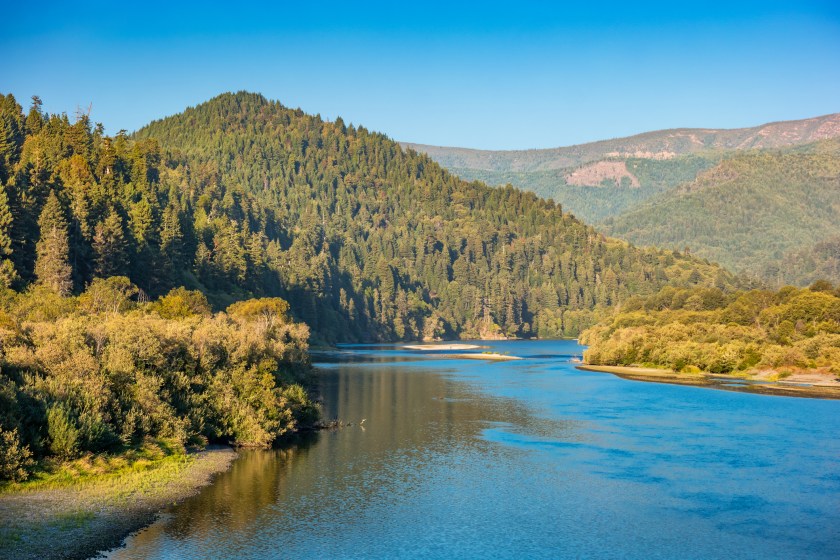
benedek via Getty Images
Still itching to know what lies above what the human eye can see? William Russell, professor of environmental studies at San Jose State University, explained to the Times how the coastal fog keeps redwood canopies damp; the more fog, the better. Their canopies are "fragile ecosystems" homing mini-forests and nests of the endangered seabird known as the marbled murrelet. Because of the surrounding climate, redwood trees tend to grow very tall and live for a long time. But because their roots are more shallow, it makes sense as to why hikers and adventurers impact the soil.
Hyperion was discovered back in 2006 by two naturalists, but it's not the only tree in the region that ranks among the world's tallest. Redwood National Park is also home to several other of the world's tallest trees, including Helios (377 feet) and Icarus (371 feet). But this is not to be confused with the world's largest tree by volume. That title goes to the General Sherman Tree in Sequoia National Park, just an hour away.
So Should You Hike to Hyperion?
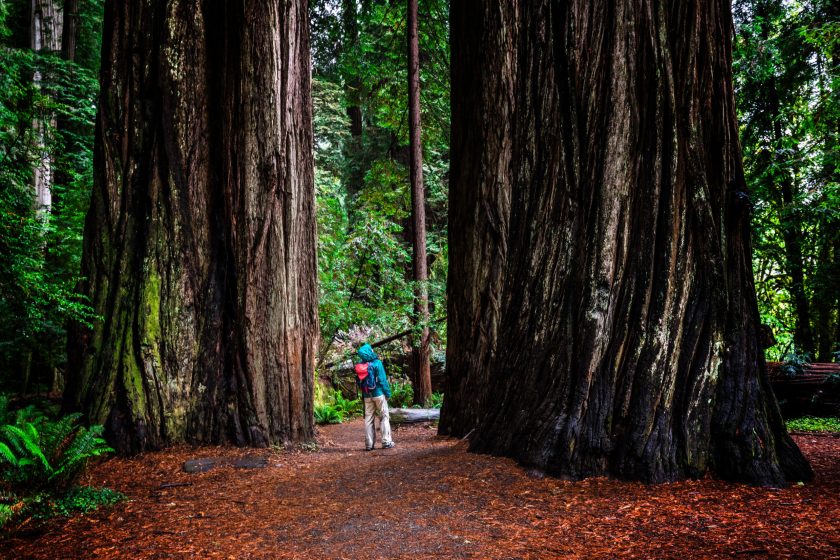
Peter Burnett via Getty Images
Lucy Kerhoulas, an associate professor of forest physiology at California State Polytechnic University, Humboldt, told the Times that if beholders want to see a "glamourous, tall, jaw-dropping tree," to check out Jedediah Smith Redwoods State Park instead.
Does it really have to be said? You most definitely shouldn't hike off-trail just so that you can say you've seen the world's tallest tree up close. Even the NPS went for the guilt trip, and offered questions to make anyone second-guess their decisions like "Do you choose to contribute to habitat destruction?" and "Will you make the choice, instead, to enjoy the beauty of other tall trees on designated hiking trails?"
It should be a pretty easy choice.
